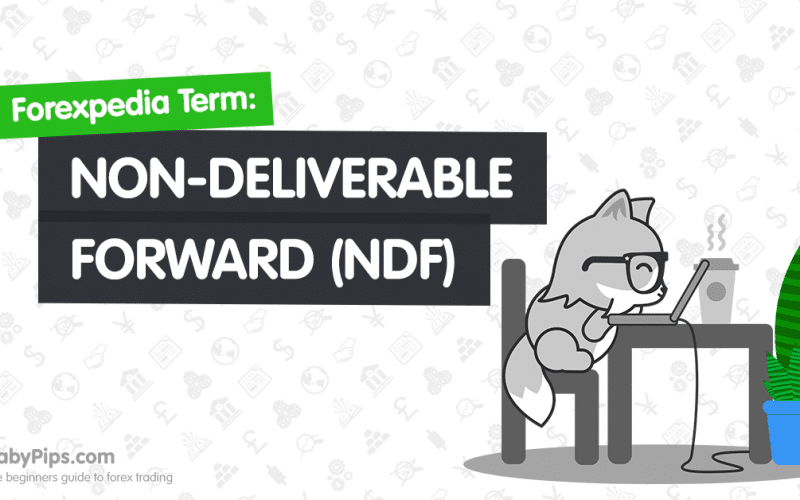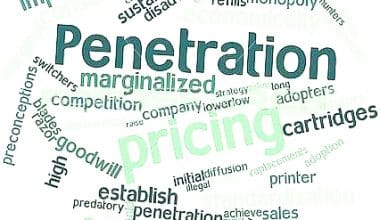The non-deliverable forward (NDF) is a vital topic to be discussed by traders all over the world. NDF is a two-party currency derivatives contract to exchange cash flows between the NDF and prevailing spot rates. However, this article will cover the meaning, currency, bid list, and example of NDF.
Now, let’s discuss the meaning of NDF.
NDF Meaning
A non-deliverable forward (NDF) is a cash-settled, and often short-term, forward contract. However, the notional amount is not replaceable, hence the name “non-deliverable.”
FYI, Notional value is a term mostly used to value the underlying asset in a derivatives trade. Furthermore, in Currency NDF, two parties agree to take opposite sides of a transaction for a certain amount of money. However, it is for a contracted rate.
Also, this means that counterparties reconcile the difference between the contracted NDF price and the current spot price. However, the profit or loss is calculated on the notional amount of the agreement. Hence, taking the difference between the agreed-upon rate and the spot rate at the time of agreement.
Additionally, NDFs are usually settled in cash. The most commonly used currency for settlement is the U.S. dollar. However, NDFs are also referred to as forward contracts for difference (FCDs). Also, they are mostly used in countries where they ban forward FX trading. Indeed, an NDF is used to manage volatility with exchange rates.
Having known the meaning of NDF, let us take a brief look at its features
Features Of Non-Deliverable Forward
Ndf has four important features. However, there are several essential features of an NDF, aside from the notional amount mentioned above. They include:
Date Fixing
This is an agreed-upon date when the spot rate and NDF rate are compared. Also,this is how a notional amount is determined.
Settlement Date
This is the day that both parties agree to make the difference between the exchange rates due. However, one party pays the other party on this day, while the receiving party retrieves the difference of the rates in cash
Non-Deliverable Forward Rate
This is the rate that is accepted on the date of the transaction. Again, it is the sincere rate of the currencies involved in the exchange.
Spot Rate
Finally, this is the the most up-to-date rate for the NDF, as provided by the central bank
Non-Deliverable Forwards (NDF) Example
As mentioned earlier, NDF is a two-party currency derivatives contract to exchange cash flows between the NDF and prevailing spot rates. However, one of these parties will pay the other the difference coming from this exchange.
Cash flow = (NDF rate – Spot rate) * Notional amount
However, non-deliverable forward (NDF) is usually carried out offshore, meaning outside the home market of the untraded currency. For example, if a country’s currency is prevented from moving offshore, it would be impossible to complete the transaction in that currency with someone outside the restricted country.
What Is NDF Fee?
One type of forward contract is the non-deliverable forward (NDF), which is settled in cash and has a relatively short term. Non-deliverable refers to the fact that the notional amount is never actually exchanged. In a currency NDF, two parties agree to take opposite sides of a transaction in exchange for a predetermined sum of money, at an agreed upon exchange rate.
Who Pays the Forward Price?
At the agreed upon forward price, the seller of a forward contract transfers the underlying asset, financial derivative, or currency to the buyer on the agreed upon delivery date. It is equivalent to the spot price plus any additional costs involved, such as storage or interest.
NDF Example
There are several examples of a non-deliverable forward (NDF). However, let’s take a look at one example that will give you a better understanding of NDF.
Example:
WNE Company imports telecommunication equipment from a Brazilian supplier at a cost of BRL 30 million. WNE Co. is invoiced and payment is due in 100 days (t+100). The supplier wishes to be paid in USD in an amount equivalent to BRL 30 MM. Thus WNE Co., and not the supplier, is exposed to exchange rate fluctuations.
WNE Co: Buys BRL / Sells USD
Amount: BRL 30.0 MM
Forward NDF Rate: 0.7690
Scenario 1:
NDF Hedge is In-the-Money
Spot Fixing Rate: 0.80000
At maturity, XYZ Co. has the obligation to buy BRL 30.0 MM from Queens Bank at the rate of 0.76900 compared to the spot-fixing rate of 0.80000. However, since BRL is a non-convertible currency, the net amount will be settled in USD.
To settle the NDF, Queens Bank will make a payment of USD 93,0000 to XYZ Co. on t+100. The amount is calculated as follows from the perspective of XYZ Co:
(BRL 30.0 MM * 0.80000) – (BRL 30.0 MM * 0.76900) = USD 93,0000
WNE Co. benefits from the hedge despite the strengthening of BRL and can budget that the net cost of the equipment will be, in dollar terms, USD 2.3070 MM. WNE Co. will then have Queens Bank wire to the Brazilian supplier USD 2.40 MM and WNE Co. will also receive USD 93,0000 from Queens Bank. The net of the payments equals the budgeted amount of USD 20.307 MM. The supplier will then convert the USD to BRL with its own bank.
Scenario 2:
NDF Hedge is Out-of-the-Money
Fixing Rate: 0.74100
At maturity, WNE Co. has the obligation to buy BRL 30.0 MM from Queens Bank at the rate of 0.76900 compared to the fixing rate of 0.7410. However, since BRL is a non-convertible currency, the net amount will be settled in USD.
To settle the NDF, WNE Co. will make a payment of USD 84,0000 to Queens Bank on t+100. The amount is calculated as follows from the perspective of WNE Co:
(BRL 30.0 MM * 0.7410) – (BRL 30.0 MM * 0.76900) = – USD 84,0000
WNE Co. will have Queens Bank wire USD 20.223 MM to the Brazilian supplier and will pay USD 84,0000 to Queens Bank. The sum of the payments equals the budgeted amount of USD 20.307 MM. The supplier will then convert the USD to BRL with its own bank.
What Currency Are Non-deliverable Forwards Settled In?
Cash is used to settle NDFs. The U.S. dollar is the de facto standard for settlement. Forward contracts for difference, which is another name for NDFs, is another term for these financial instruments (FCDs). In countries where forward foreign exchange trading is prohibited, their use has skyrocketed.
How Many Types of Forward Rates Are?
There are two types of forward rates: forward interest rates and forward currency exchange rates.
NDF Currency
The largest NDF markets are the Chinese yuan, Indian rupee, South Korean won, New Taiwan dollar, Brazilian real, and Russian ruble. However, the largest part of NDF dealing takes place in London. Also, it has active markets in New York, Singapore, and Hong Kong.
Nevertheless, some countries, including South Korea, have defined but restricted onshore forward markets in addition to an active NDF market.
Furthermore, the largest portion of its trading is done through the U.S. dollar. However, there are also effective markets adopting the euro, the Japanese yen, and, to a lesser extent, the British pound and the Swiss franc.
NDF Bid List
The NDF bid list is a vital segment of the non-deliverable forward settlement. However, it is quite difficult to get the NDF bid list on the internet. Nevertheless, here is a link directing you to the NDF bid list.
Disclaimer
However, it should be noted that this is only for informational purposes and for not for any form of investment.
Conclusion
In conclusion, non-deliverable forward is usually carried out offshore, meaning outside the home market of the untraded currency.
NDF FAQ
What is NDF India?
A non-deliverable forward (NDF) is a cash-settled, and often short-term, forward contract. However, the notional amount is not replaceable, hence the name “non-deliverable.”
How is NDF rate calculated?
The NDF contract is (spot rate-quoted currency X per dollar) x * dollar. Count the number of days divided by 360 and divide that number by the currency’s interest rate to get the number of days divided by the currency’s interest rate. (number of days/360)






